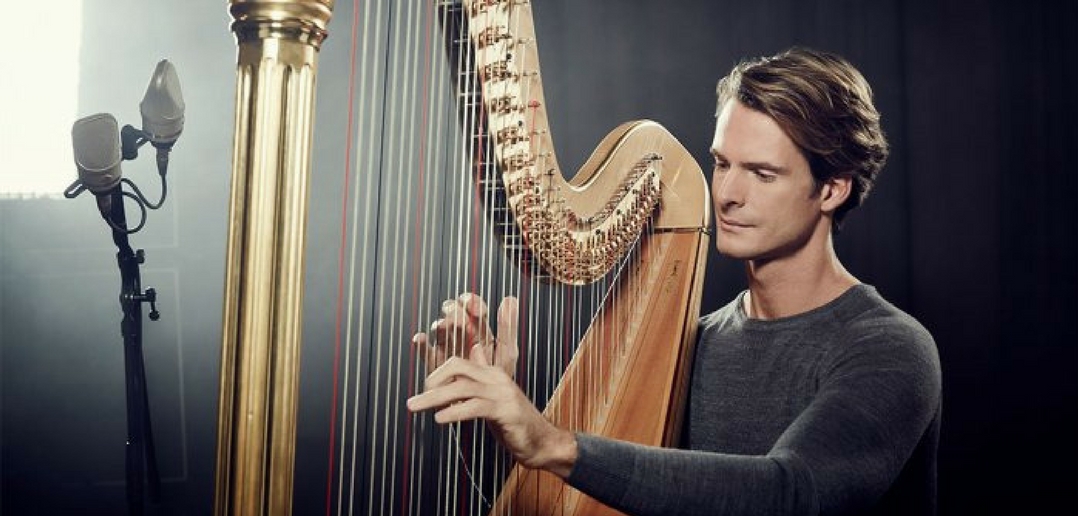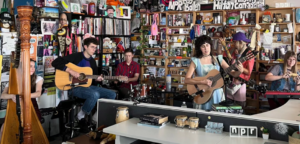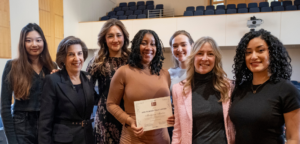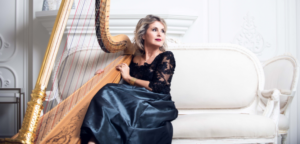Since the release of Xavier de Maistre’s latest album, Serenata Española has seen critical acclaim and commercial success around the world. The album is particularly notable for its collaborations with legendary castanet player Lucero Tena and a number of new arrangements for the harp. Harp Column sat down with him to ask about its origins and to find out more about his approach to arranging music.
So far, you have released albums focusing on Venetian composers from the 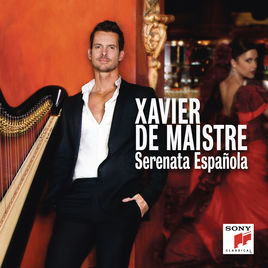 Baroque era, the music of Mozart, romantic works by composers from Russia and Bohemia, to name a few. What inspired you to create an album of Spanish music arranged for the harp?
Baroque era, the music of Mozart, romantic works by composers from Russia and Bohemia, to name a few. What inspired you to create an album of Spanish music arranged for the harp?
I am a great fan of Spanish music, and I have always wanted to dedicate a solo album to it. Almost all of these pieces are named after cities or regions of Spain, and it is a gorgeous musical journey. It is interesting that this repertoire has been widely written for the piano but is now more well-known on the guitar! I think the harp is the perfect compromise: plucked strings like the guitar but the wide-spectrum of colors and bright sound like the piano.
I love the video clips with Lucero Tena that you have released; I am in awe of her skills and so impressed by her presence. What was it like to collaborate with her?
I was introduced to Lucero after playing the Ginastera concerto in Madrid under Maestro López Cobos. We were invited to dinner and immediately [I was taken] with this amazing lady! For me she represents the “Spanish Lady” with her pride, dignity, and strong temperament. Lucero has just turned 80, but she has more energy than most people my age! When I went back to my hotel room after that dinner, I had a look at her videos on YouTube and was fascinated. The next morning, I called my manager and told her I wanted to realize my next project with her!
There is such a wide range of Spanish music on this album – you play pieces by composers that span three centuries! How did you decide what works to arrange for the two instruments?
I talked with Lucero a lot. There are so many pieces which sound great for our instrument. We decided to keep our favorites and tried to choose a very varied repertoire with the widest range of colors and styles. I had to convince my recording company, Sony, and the concert organizers that this combination could be successful because it had never been done before, so we decided to focus on popular repertoire.
One of my absolute favorite tracks on the album is the stunningly delicate Recuerdos de la Alhambra. The tremolo effect sounds completely effortless and the result is that feels like it was actually written for harp instead of guitar. Can you tell us about your approach to arranging the work for harp?
When I adapt a piece, I don’t try to imitate the instrument it has been written for. It would be pointless, and in the end, it would never sound as good as the original. I try to make these famous pieces sound new using the amazing spectrum of colors [that] is possible with the harp. I didn’t want Recuerdos to sound like a guitar study but more create a dreamy, floating atmosphere to touch the audience.
You obviously stay incredibly busy, performing and teaching all over the world. Do you have any advice for readers looking to launch a solo career?
When I was a student, all my teachers told me that it was not possible to make a solo career as a harpist, so I focused on orchestra auditions. But I didn’t want to play in the orchestra and play the same pieces for 40 years! I think it is important to be at the same time innovative and careful with the choice of the repertoire. The harp is not a means in itself, it is an instrument to express music and move the audience. A lot of arrangements are exciting for the harpists but don’t really bring anything or serve the music. When I quit the Vienna Philharmonic 8 years ago, I knew I would play a lot of concerts, but I couldn’t imagine I would play with all these amazing orchestras like London Philharmonic, Chicago Symphony, Orchestre de Paris, NHK Symphony or LA Phil. Everybody told me that harp music couldn’t reach a wide audience, and now my last album is number 3 in the classical charts in Germany!
Before you go, do you have any special projects or plans in the works that you can share with us?
I have a few plans but I prefer to wait until they become more concrete before talking about them!





